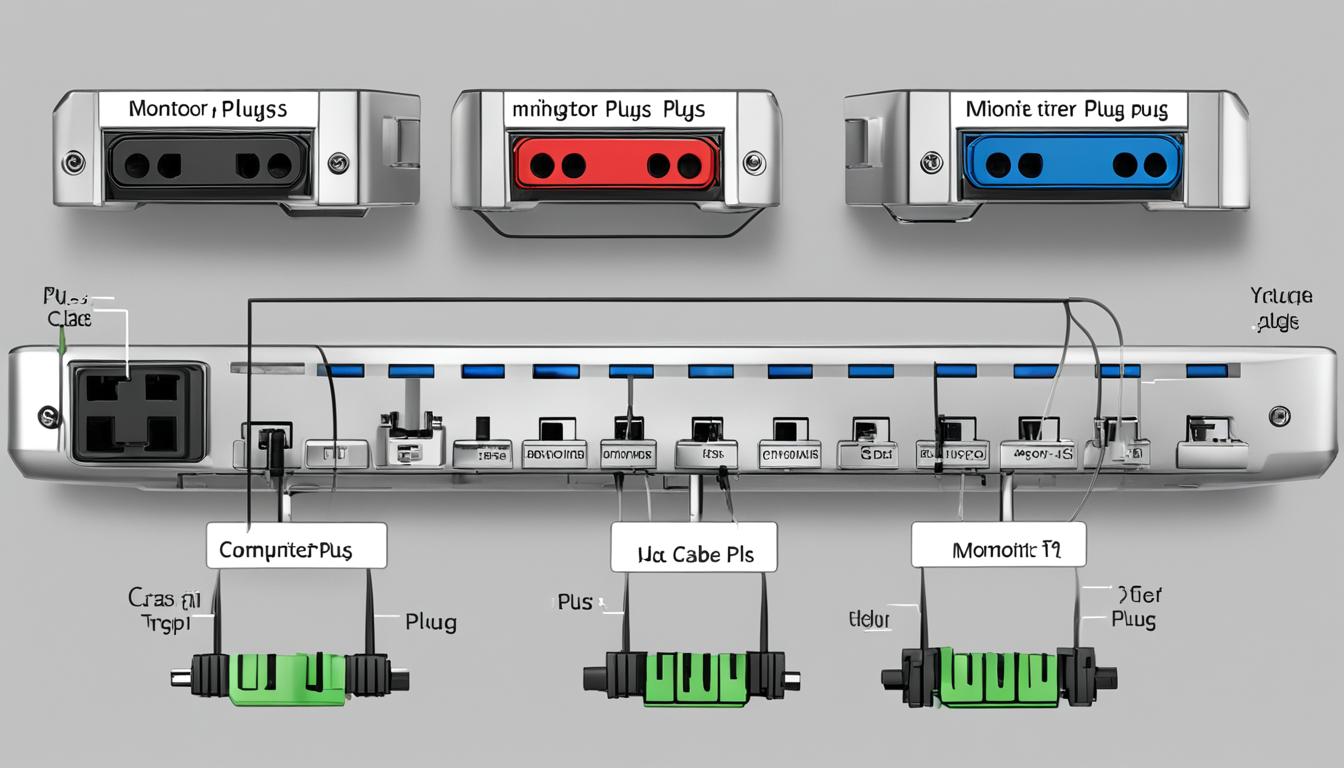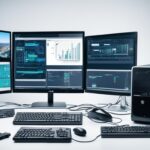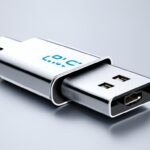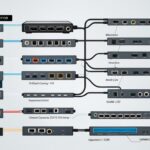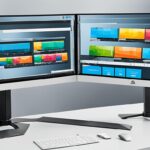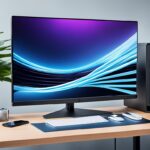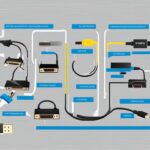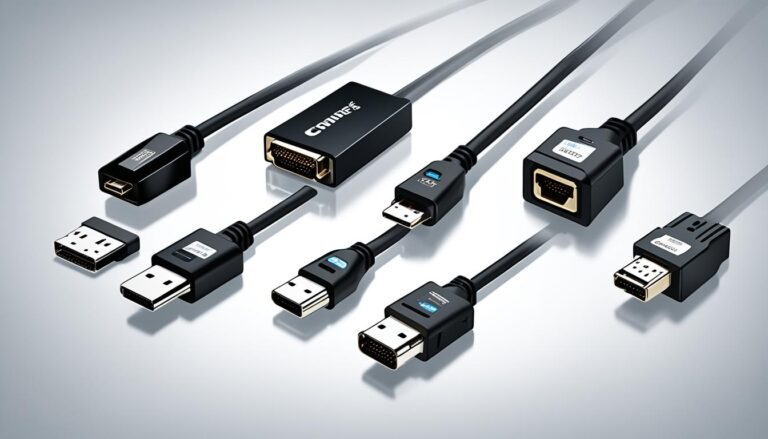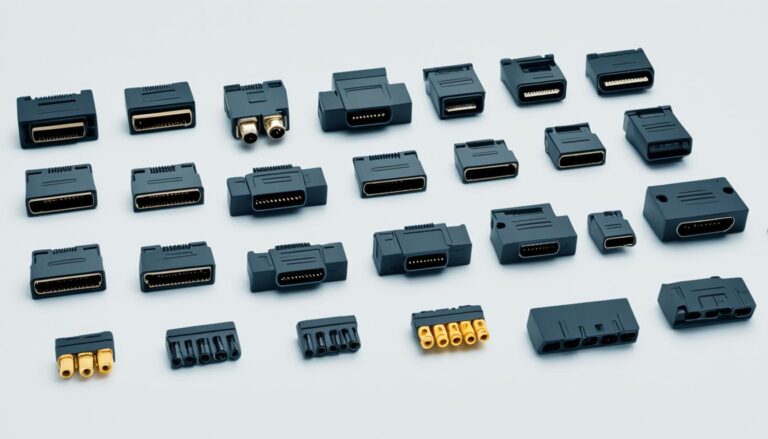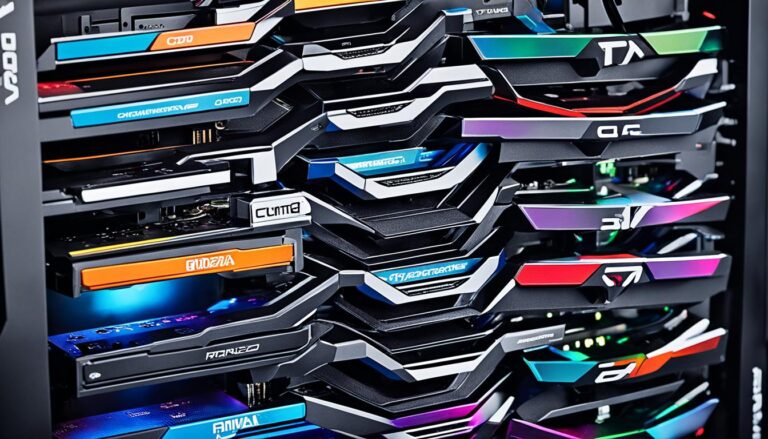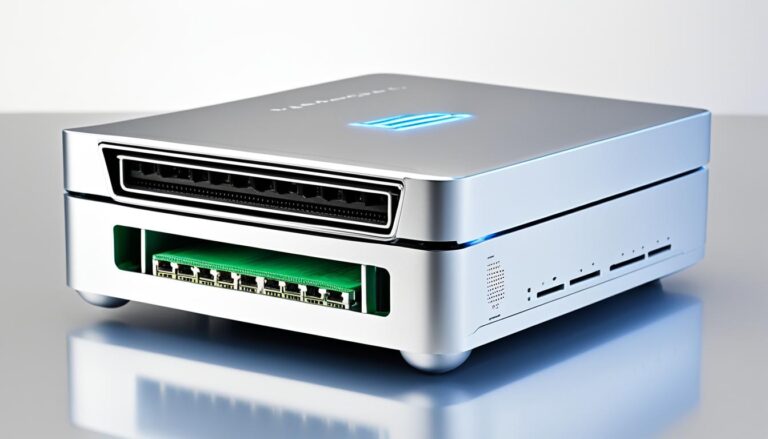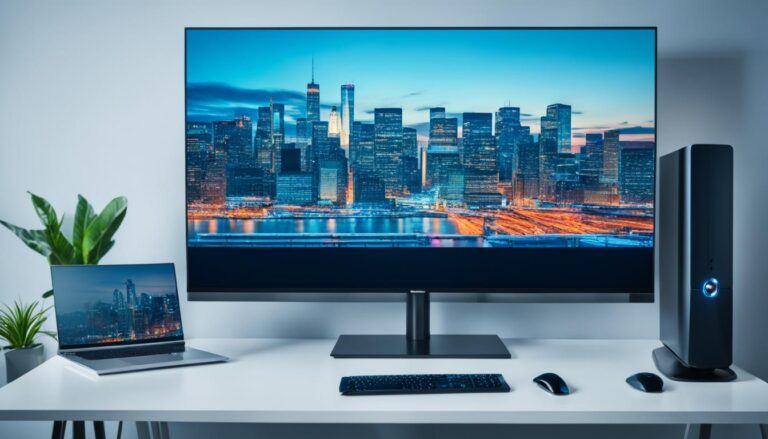Monitor plugs are key when connecting devices to monitors, TVs, and more. Knowing the different types and their roles is vital for great display. We’ll look at the various monitor plug types and their benefits.
There are many monitor plugs, from serial and PS/2 to network and video ports. Each has its own role for connecting devices. By understanding these plug types, you can make sure connections are smooth. This leads to a better viewing experience. Let’s learn about each plug type and what it does.
Serial, PS/2, and Parallel Ports
Many different types of ports have been used to connect devices to computers. We’ll look at serial ports, PS/2 connectors, and parallel ports. We’ll also discuss their importance to monitor plugs and display connections.
Serial Ports
Serial ports, known as RS-232 ports, were once widespread for data transfer. They connected devices like modems and mice to PCs reliably. But, USB technology has made these ports less common in new computers.
PS/2 Connectors
PS/2 connectors got their start with IBM’s Personal System/2 series. They were mainly for linking keyboards and mice to computers. Offering a smaller, more dependable option than serial ports, they assured smooth device-to-computer communication.
Parallel Ports
Parallel ports used to be the go-to for hooking up printers to computers. They sent multiple data signals at once, allowing for swift data transfer. Yet, USB and other new technologies have taken their place for more efficient options.
While serial, PS/2, and parallel ports were crucial in computer connectivity’s past, they’re used less now. Thanks to USB and other modern interfaces, we can connect devices faster and in more ways.
Network and Video Ports
Network ports are key for connecting to the internet or local networks. The Ethernet/RJ45 port is widely used. It lets computers, routers, and network switches connect quickly and reliably. You just need to plug in an Ethernet cable.
Video ports connect monitors and TVs to computers for great visuals. VGA ports, or Video Graphics Array ports, are very common for monitors. They work with many devices as they support analog signals.
HDMI ports are now more popular for videos. They send digital data without losing quality, so pictures and sound are clear. You’ll find HDMI ports on most new monitors, TVs, and projectors. They’re great for watching videos or presenting.
There are other video ports too, like S-Video for older TVs and some graphics cards. DVI ports connect monitors to computers. They’re useful for older screens that don’t have HDMI.
Network and video ports are very important for linking devices. They help you get online or watch things in high quality. The right ports make everything work smoothly.
Audio, Firewire, and Power Connectors
Connecting audio devices to computers offers various options through audio ports. Audio mini-jacks, also known as headphone jacks, are found on many devices. They let you connect headphones or speakers for a great sound experience.
For top-notch audio quality, S/PDIF (Sony/Philips Digital Interface) ports are your best bet. They send out digital audio for clear and precise sound. These are ideal for linking to external audio systems or digital sound processors.
Firewire ports are next in line. These allow quick data sharing between devices. You’ll find them on professional audio interfaces and video cameras. They’re a must for high-quality audio and video work.
“Firewire ports allow for blazing-fast data transfer speeds, making them a go-to choice for audio and video professionals.” – Audio & Video Expert
The final piece to the puzzle is power connectors. These connectors keep your gear running smoothly. They come in variants like C5/C6, C7/C8, and C13/C14. Each type powers different devices.
Power Connector Types:
| Power Connector | Usage |
|---|---|
| C5/C6 | Used for powering laptop adapters and some computer monitors. |
| C7/C8 | Commonly used for powering small electronic devices like gaming consoles and DVD players. |
| C13/C14 | Widely utilized for powering computer towers, servers, and high-powered devices. |
These audio, Firewire, and power connectors help improve your audio, speed up data transfer, and maintain power. Knowing how these connectors work is key. It helps you connect and integrate audio devices into any setup, easily.
Conclusion
Getting to know the different monitor plugs and their roles is key for a great display setup. Whether it’s for a monitor, TV, or another device, knowing your options improves quality and ease of use.
Back in the day, serial ports and PS/2 connectors were common for linking mice, keyboards, and modems to PCs. Now, they’ve been swapped out for more adaptable choices.
Video ports, like VGA and HDMI, are vital for hooking up displays to computers. VGA is often used for external screens, while HDMI is great for sending digital data without losing quality. S-Video and DVI also give unique benefits for different display needs.
In addition to video, there are audio ports and Firewire connectors. Audio ports let you plug in speakers or headphones easily. Meanwhile, Firewire is brilliant for quick data transfer, useful in many multimedia tasks.
Not to forget, power connectors are essential for providing electricity to monitors and gadgets. Knowing the types, such as C5/C6, C7/C8, and C13/C14, means your devices get the right power safely.
By understanding the different monitor plugs, you can choose well for your display needs. Whether for work, play, or entertainment, the correct plugs mean better communication between your devices and a smoother experience.
FAQ
What are monitor plugs?
Monitor plugs link devices to monitors, TVs, networks, and peripherals. They ensure the best display connectivity.
What are the different types of monitor plugs?
Many monitor plugs exist. They include serial, PS/2, parallel ports, and network ports like Ethernet/RJ45. Also, there are video ports such as VGA, HDMI, S-Video, and DVI. Don’t forget audio ports and Firewire ports, along with power connectors like C5/C6, C7/C8, and C13/C14.
What is the functionality of serial ports?
Serial ports transfer data one bit at a time. They used to connect external modems or mice to PCs.
What are PS/2 connectors used for?
PS/2 connectors connect keyboards and mice to PCs. They’re named after the IBM Personal System/2 series.
Are parallel ports still commonly used?
Parallel ports were once standard for printer connections. They send data signals all at once. Nowadays, USB ports mostly replaced them.
What are network ports used for?
Network ports like Ethernet/RJ45 connect devices to the internet or local networks.
Which video ports are commonly used for external monitors?
For external monitors, VGA ports are widely used. But HDMI ports are needed for uncompressed digital data. S-Video and DVI ports also serve distinct purposes for various display devices.
What are audio ports used for?
Audio ports let you connect speakers or headphones to computers. They include mini-jacks and S/PDIF.
What are Firewire ports used for?
Firewire ports enable high-speed data transfer between devices.
What is the purpose of power connectors?
Power connectors like C5/C6, C7/C8, and C13/C14 power monitors and peripherals. They’re essential for their operation.
